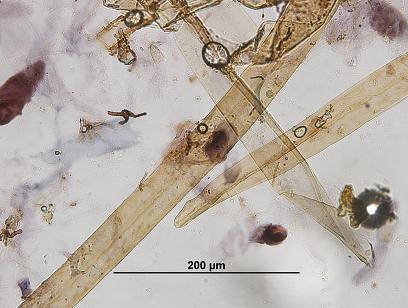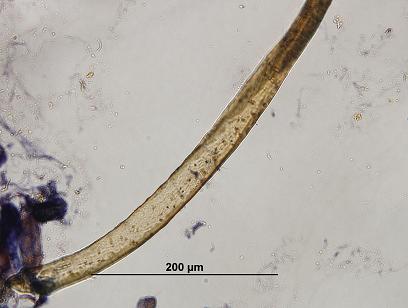Cedar, Japanese
| Common Name | Cedar, Japanese | Japanese Name | Sugi |
|---|---|---|---|
| Scientific Name | Taxodiaceae Cryptomeria Japonica | ||
| Fibre Length | Average 2.5mm (2-3mm) | Fibre Width | Average 35µm (30-40µm) |
| Fibre Ends | Cross-Marking | ||
| Associated Cells | |||
| Herzberg Colour | Yellow/Brown | Graff 'C' Colour | Yellow/Brown |
Notes:
Native to Japan, this tree also grows in southern China and Taiwan. Actually a conifer, it is not related to other cedars. It is an evergreen, growing up to 70 metres in height and 4 metres in width. Extensively cultivated in Japan and China, the timber is often used in construction, furnishing and panelling where its light weight, strength, water resistance and scent are appreciated. Its pollen is also a major cause of hayfever. In Japan Japanese Cedar from around Kyoto is particularly valued, and is refered to as Kitayama Sugi. Pits are taxodiod, usually in 1-2, sometimes 3 spaced across the fibre width (see Image 2). There is a lack of ray tracheids pits. Cross field areas are very low. Earlywood tracheids are thin walled [14]. Fibres are associated with a variety of parenchyma cells that stain blue or purple. While this sample stained these colours, it is important to note that softwood pulps stain different colours dependant upon its processing. The vivid yellow colour of this sample is potentially indicative of groundwood, or a medium to well cooked sulfate pulp. It is important to refer to the ASTM Standard[1] for more information regarding colour ranges for various methods of processing softwood pulps.
| Image 1 | Image 2 |
|---|---|
 |
 |
For information about this page, contact: Travis Taylor
Contact email address: travtora@gmail.com
Centre homepage: www.culturalconservation.unimelb.edu.au
Page last modified:
This page, its contents and style, are the responsibility of the author and do not represent the views, policies or opinions of The University of Melbourne.